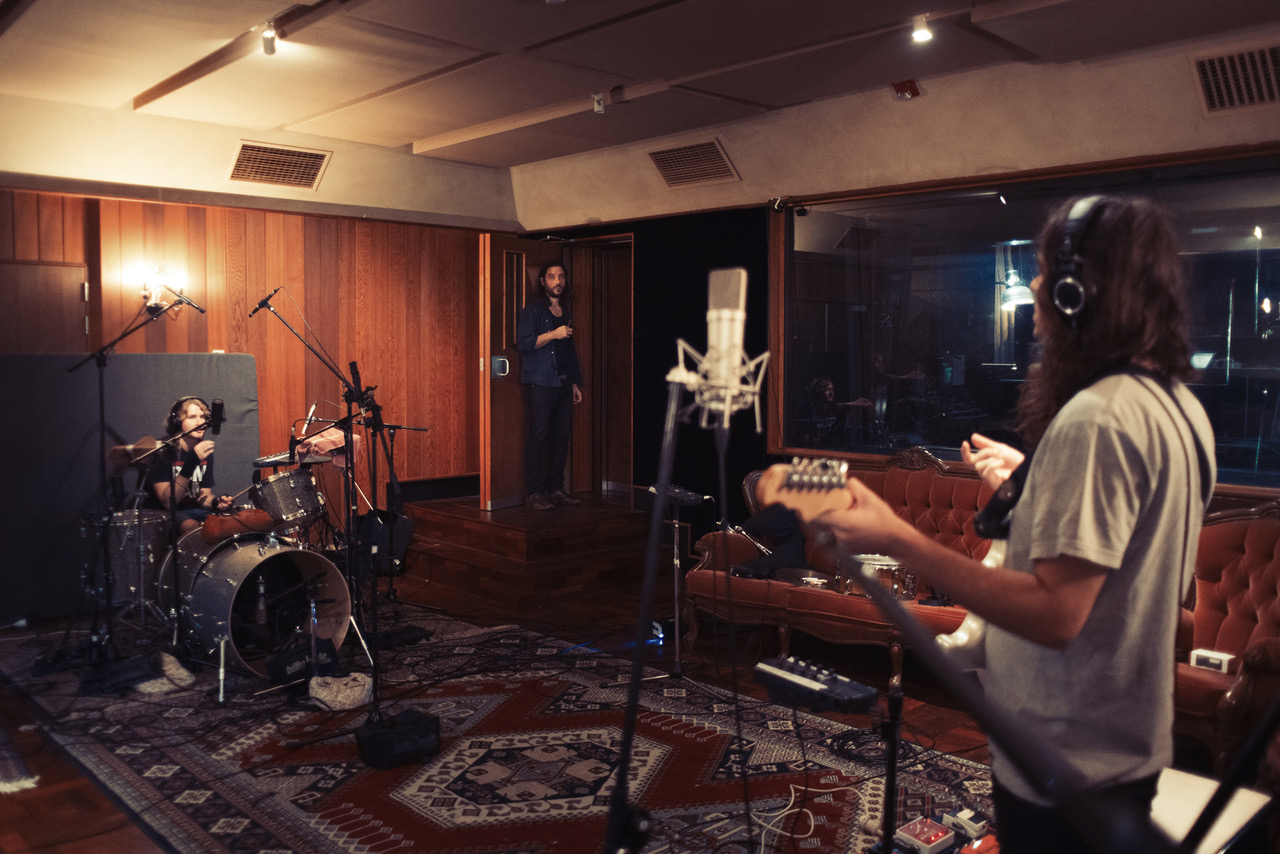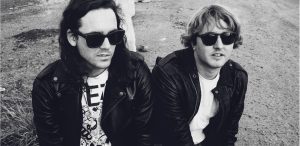When DZ Deathrays set to work on their latest LP, Bloody Lovely, they strove to capture a different energy to that of their previous studio album. The immediate and impactful Total Meltdown proved to be its lead single, a track set apart by merciless beats and rip-roaring guitars, encapsulating the energy and intensity they were after. We were overjoyed to discuss the creation of the track with frontman Shane Parsons, who broke down his and Simon Ridley’s creative vision as well as the technical side of their recording process. Luke Henery’s studio shots help to paint the picture, revealing more about the environment in which the record was made. The Aussie duo perform live at Band on the Wall on Friday 24th August, as part of their Blood Lovely EU tour and we’re certain this dynamite number will be a feature of the set.
You had a few aesthetic ideas going into the recording of Bloody Lovely: achieving a looser and livelier sound being a vital one. How did this affect your recording process? Did you record to a click and try to capture the core of each track in whole takes?
Shane Parsons: ‘Yes. we tried to give this album more of a live feel but it was still pieced together bit by bit. Essentially, it was trying to get a good drum take then layering the guitars and vocals on top. I think where this album differed from Black Rat is this time, we chose approx. 6 guitar sounds and kept the kit the same the whole way through the album, whereas Black Rat we were changing settings on amps, pedals and even kick drums and snares for certain parts of a song. More like a dance record. Total Meltdown was done the same way, a few different tones to choose from and a focus on melody.’
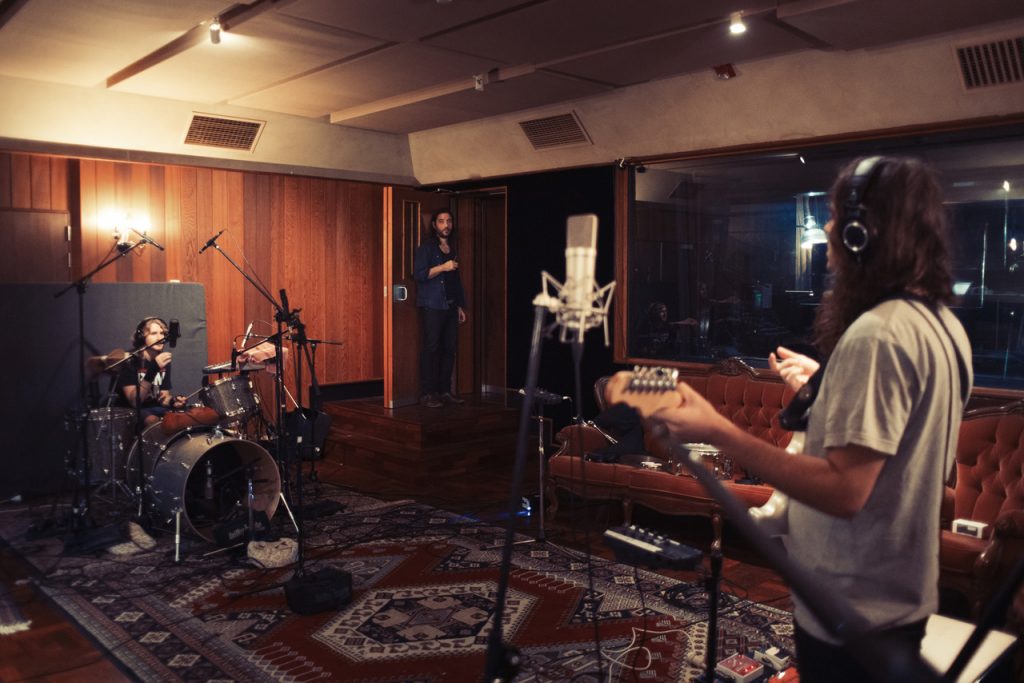
The band in the live room: Shane Parsons playing a Burns MR2 Marquee and Simon Ridley an acoustic drum set with modified kick drum
Where did Total Meltdown begin? Was it a riff, lyric or chord progression that came to you first and how quickly did the song evolve from its initial idea?
‘It started as the verse riff. We were doing some pre-production with Burke Reid for the session we recorded Blood on my leather (stand alone single) and I was just flicking through ideas I had in Garageband, even little riffs with no vocal. This one came up and Burke really liked it — especially the groove of the riff — so we attempted to write a song that just had that verse riff all the way through the song. It was a little harder than we first thought it would be. So we ended up recording the song as a verse and chorus the same and I think we had the bridge in there too… but no vocal really happened, so the song was shelved for about a year or so until I slowly found a vocal for the verse and then after about 6 other choruses, found the one that it is now. To me, this song has the feeling of a thrown-together pop-rock tune, but it was anything but.’
You achieve an unbelievable guitar sound on the track, emphasised by that lovely drop out after the bridge. How much work went into the guitar sound and are there certain pedals/processing units that took it to the next level?
‘There are a lot of guitars in there. That’s the way I like to record them… a bass, then two guitar tones stacked for rhythm and then two wide guitars for lead. I can’t remember exactly what pedals were used… I think an OCD [Fulltone OCD Overdrive] for gain, but we used a custom made amp from Brazil, Orange Retro 50 and an Ampeg SVT. We got the SVT for bass but it turned out it was amazing for clean guitar, so we used that quite a lot. I believe the drop out before the last chorus is the SVT. On the lead guitar we really wanted to make those choruses pad, so we used delays on there and a phaser to try and give it a little extra movement. I’m a big fan of music that feels like it’s moving all the time.’
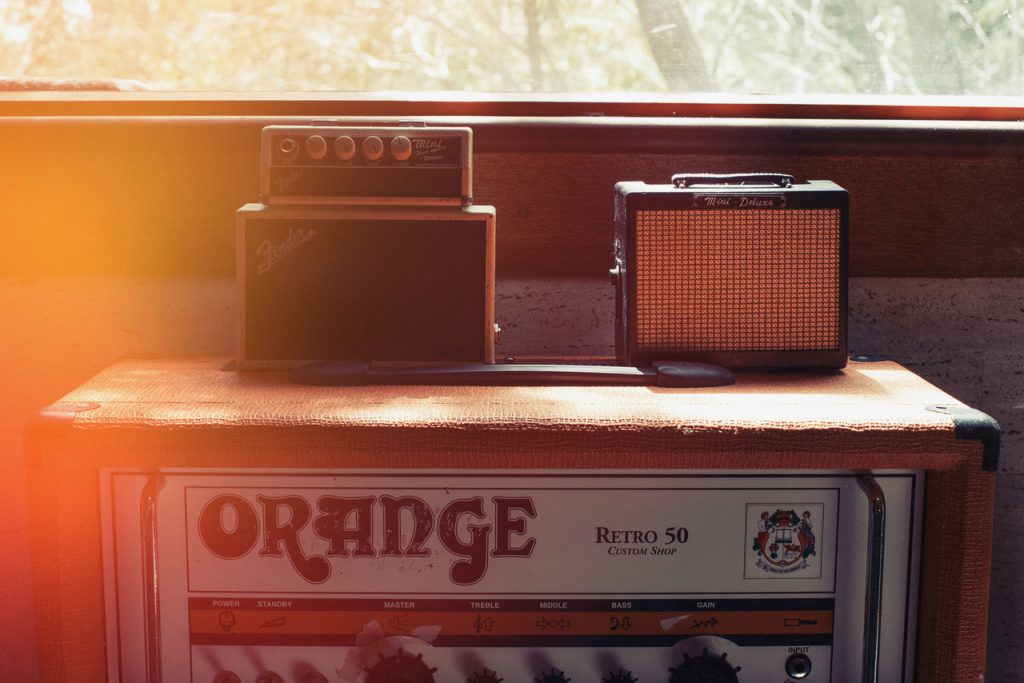 Some of the amps Shane and producer Burke Reid had at their disposal
Some of the amps Shane and producer Burke Reid had at their disposal
The track’s lyrics at first appear quite personal, but then seem to reference disengagement and panic in a wider sense. Is that at all true? Do you remember what was on your mind as you were setting those lyrics to paper?
‘Well, funnily enough the verses were written about a slight meltdown I had when I was feeling the pressure to write lyrics in the studio in the Blood On My Leather session. I was completely stressed out because I couldn’t find something I was happy with — and I usually work well under pressure — but this time it just didn’t happen. So I had this mini meltdown, then a couple of weeks later wrote about it. I was thinking about how silly it was to get all worked up over something so small when there’s so many other bigger issues out there and I should be happy to be where I am. The chorus… well, that is just something I was screaming when Simon and I were working in the rehearsal room trying to figure out the best way to take the song. We knew it could be something great on the album but without a good hook in the chorus it was always going to be flat. So this chorus is about nothing really… I guess just that feeling of being a little be exhausted, brain dead when you’re squeezing every little drop of creativity out. That’s a loose way to tie the song together lyrically!’
You worked with producer Burke Reid at The Grove Studios for the record. How inspiring is working with Burke in that environment and did Total Meltdown change at all when after you entered the studio with Burke?
‘Working with Burke is amazing. He is the kind of producer who pushes you to go further than you think you can go, and gets the magnifying glass over each part of the song, to make sure all the bits make sense and that there are hooks in there so that you and the people listening don’t get bored of the song. He has helped Simon and I become better writers, I think. Total Meltdown did change when we hit the studio with Burke. He was behind the idea for the pad guitars in the chorus. It was something we hadn’t done before but being big indie guitar band fans, we were into the idea. So we sat down and worked out a progression that could evolve over the top of the four-chord chorus, that repeats. I like that idea of something basic as the bass line, and a vocal and lead line on guitar that weave around over the top of it, each having the ability to evolve so each chorus in the song is different.’
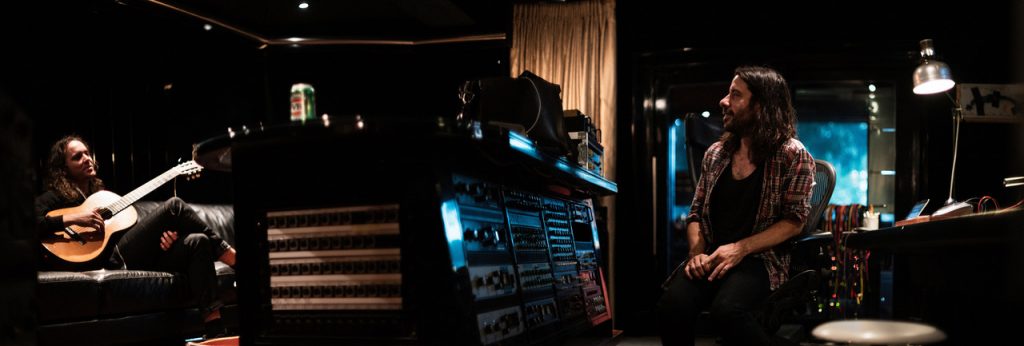 Shane and Burke in the control room
Shane and Burke in the control room
When it came to the mix and master, were you hands on, did you have instructions for your colleagues at the sound board and did it take a few tries to get the tune spot on, or was it a first time success?
‘We left the mix to Burke for a couple of weeks until he got it to a place he was happy with and then I came in with fresh ears and we just made some adjustments. This one actually had quite an adjustment, as there was a frequency in the lead guitar that was annoying burke so he EQ’d the shit out of it until there was almost nothing left. I made him flatten the EQ on that and leave it pretty organic, as it was recorded. I couldn’t hear the frequency so we made the assumption no one else would either!’
Photo Credit: Luke Henery


